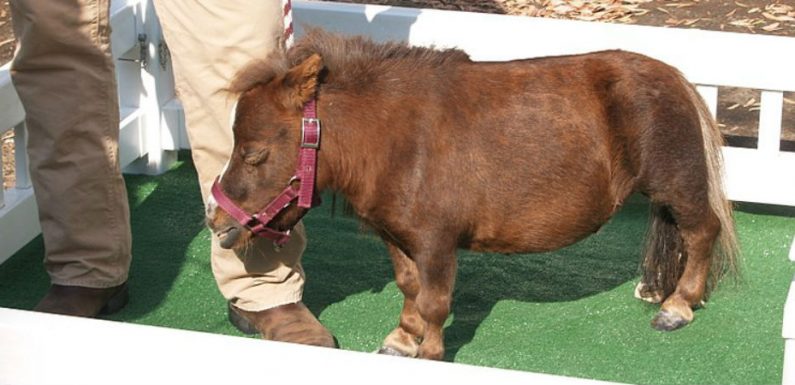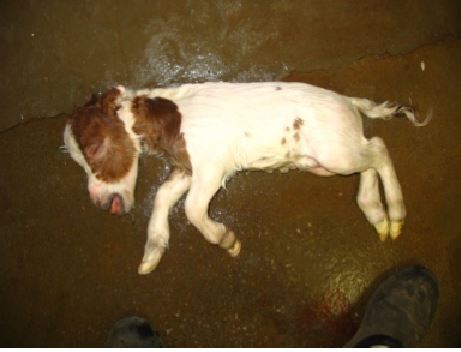
Most Miniature breeders here in Australia will be aware that sometimes Miniature foals are born with dwarfism.
Dwarfism in miniatures comes in a wide range of severity, and with a range of physical problems as well as short stature. For example, all foals with Miniature dwarfism will have shortened legs, but other signs can include a severe underbite, compressed face, shortened neck, or bowed forelegs.
Sometimes Miniature dwarfism is severe, with the foal born dead or born with such severe facial and leg deformities that it can’t stand or suck. In less severe cases the foal may have short and twisted legs, a short neck and relatively subtle changes to the shape of their head and mouth. One type of dwarfism (skeletal atavism) shortens the legs while leaving the body and head relatively normal.
Research carried out at the University of Kentucky in the USA identified four separate mutations in one gene (a gene called ACAN) that were associated with Miniature dwarfism. These have been named D1, D2, D3* and D4. Two separate mutations affecting the SHOX gene are associated with skeletal atavism, and were identified by researchers at Uppsala University in Sweden.
Foals with dwarfism carry two dwarfism genes, one inherited from their sire (a carrier) and one inherited from their dam (also a carrier). Any combination of the D genes will cause dwarfism, so for example a foal could inherit D2 from the sire and D3 from the dam and be a dwarf. Their appearance and the severity of the dwarfism will be different from a foal that inherited D2 from both parents.
This table summarises the physical signs of dwarfism in 48 tested Miniature dwarfs: https://onlinelibrary.wiley.com/action/downloadSupplement?doi=10.1111%2Fage.12682&file=age12682-sup-0002-TableS1.pdf
You will see that every form of dwarfism involving D1 causes embryonic or late-term loss. This is the most severe form of Miniature dwarfism.
It is not known whether horses with one copy of an ACAN gene mutation (a D gene) and one copy of a SHOX gene mutation are dwarves.
At Practical Horse Genetics we have been working on tests for D1, D2, D3, and D4. The D2, D3, and D4 tests are working well, but we are still working on getting our D1 test up to the quality of the other ones. We have already tested a number of Australian Miniatures known to have had dwarf foals, and found that the most common D gene in that group was D2. (We can rule out D1 if the dwarf foal was born alive and at full term.)

Thank-you to the owners who donated samples from carrier horses that have helped validate these tests!
Unfortunately, our testing has lead us to think that the second most common D gene here is not D1, D2, D3 or D4. We are planning to do some research to try to identify this possible D5 gene. We will also try to develop a test for skeletal atavism, to see if it is playing a role in any these unexplained dwarf foals.
If you have a Miniature that has produced a dwarf foal at any point please get in touch. We are still offering free testing for these foals or parents of these foals. We are especially interested in dwarf foals with forelegs so twisted that the decision was made to euthanise them. These severely twisted forelegs are a common element among the dwarf foals we have examined that do not carry the D1, D2, D3 or D4 genes.
Our lab site is Practical Horse Genetics